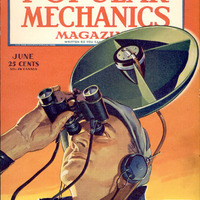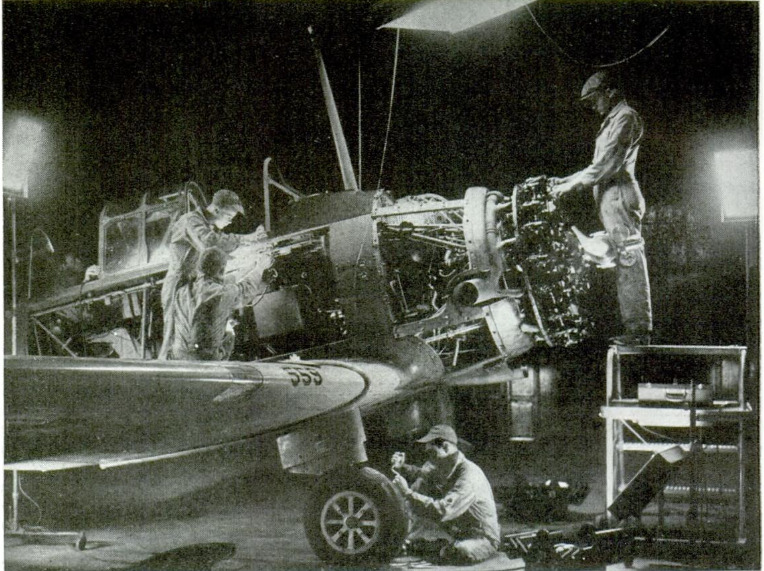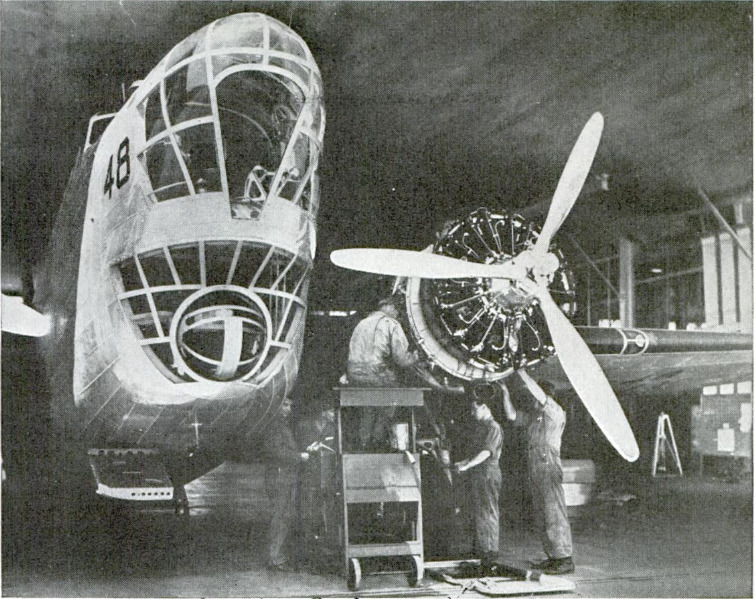BACK of America’s fighting men of the air, and largely responsible for their success or failure in combat, are thousands upon thousands of specialists - the maintenance men of the Army and Navy air units. Their job is to keep our military planes in flying and fighting condition. Beside the expert mechanics, to whom falls the task of repairing, overhauling and tuning the engines to the rhythm of victory, there are men who specialize in radio work, bomb loading, machine gun and cannon maintenance, landing gear, propellers, patching of wings and fuselage damaged by enemy fire, refueling and numerous other jobs essen- tial to effective operation of a mighty air force. Then, too, there are other thousands of men who keep a constant stream of supplies - gasoline and oil, ammunition and bombs, spare engines, replacement parts and many other items - moving to each unit. Their number is legion, of course, for it takes from eight to ten on the ground to every man in the air. When the United States Army Air Forces reach the projected strength of 2,000,000 men, there will be some 500,000 mechanics among the more than 1,500,000 members of the ground personnel. In order to provide efficiency in operations of this kind, the Air Service Command was created a few months ago, with its headquarters at Wright Field, Dayton, Ohio. Its duties are to supply, maintain and store materiel and equipment and to provide essential services for the Army Air Forces, the Air Force Combat Command and the Air Corps. This means keeping every bombing plane, pursuit ship, observation plane and trainer - in fact, every plane in the Army Air Forces - ready to fly and ready to fight. Major General Henry J. F. Miller is in command of this important organization, which replaces the Maintenance Command, a former unit of the Air Corps Materiel Division. Since the Materiel Division has been concerned primarily with experimental work and procurement of new aircraft, it became apparent, with the continuing expansion of the Air Forces, that a separate supply and maintenance organization was required. The Air Service Command is charged specifically with supply, maintenance, warehousing and air transport between stations and is responsible for the adequate stocking, proper cataloging and rapid distribution of equipmentand supplies. To facilitate this tremendous job, and daily growing greater because of the new program providing for the world’s greatest air force, the country was divided into four areas, with headquarters established at Hempstead, N. Y., Spokane, Wash., Tampa, Fla, and San Francisco, Calif,, each under the Command headquarters at Wright Field. Further expansion may come later.
 Popular Mechanics, vol. 77, n. 6, 1942
Popular Mechanics, vol. 77, n. 6, 1942





